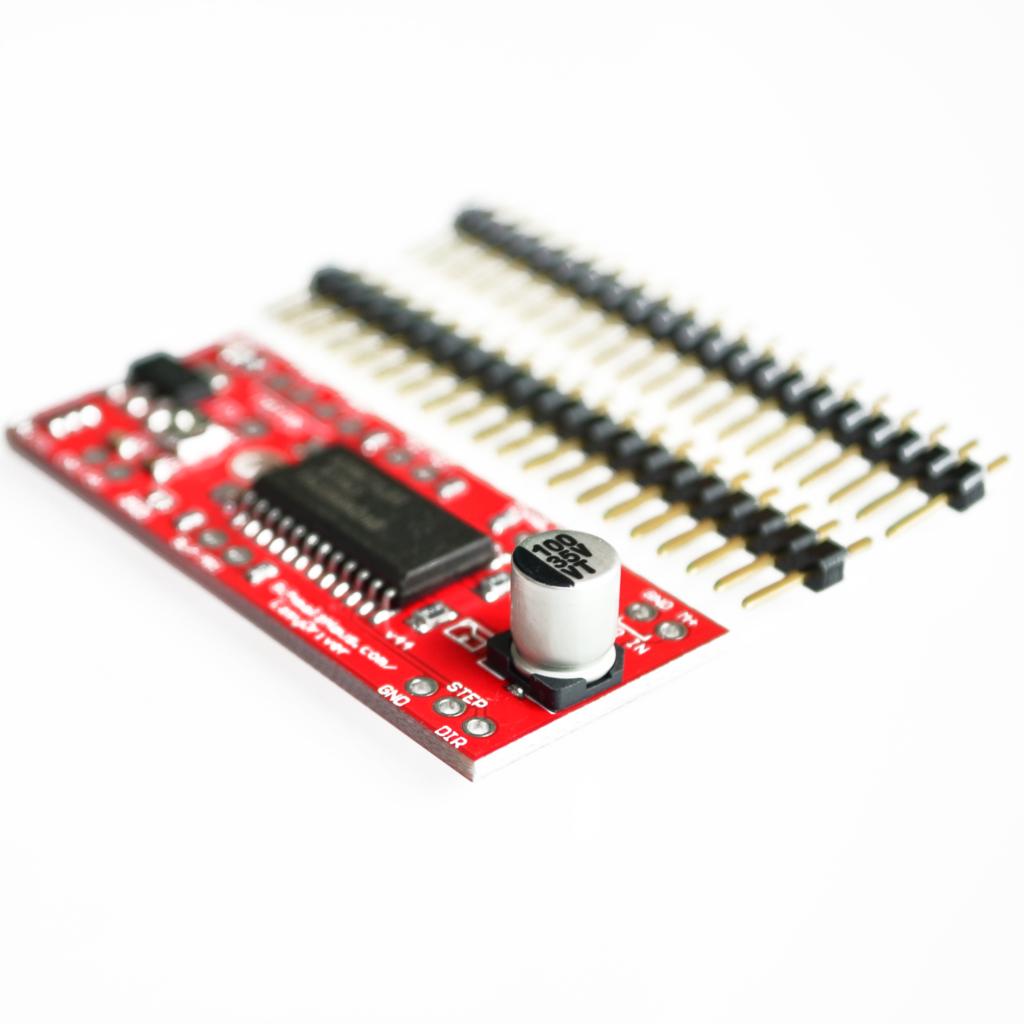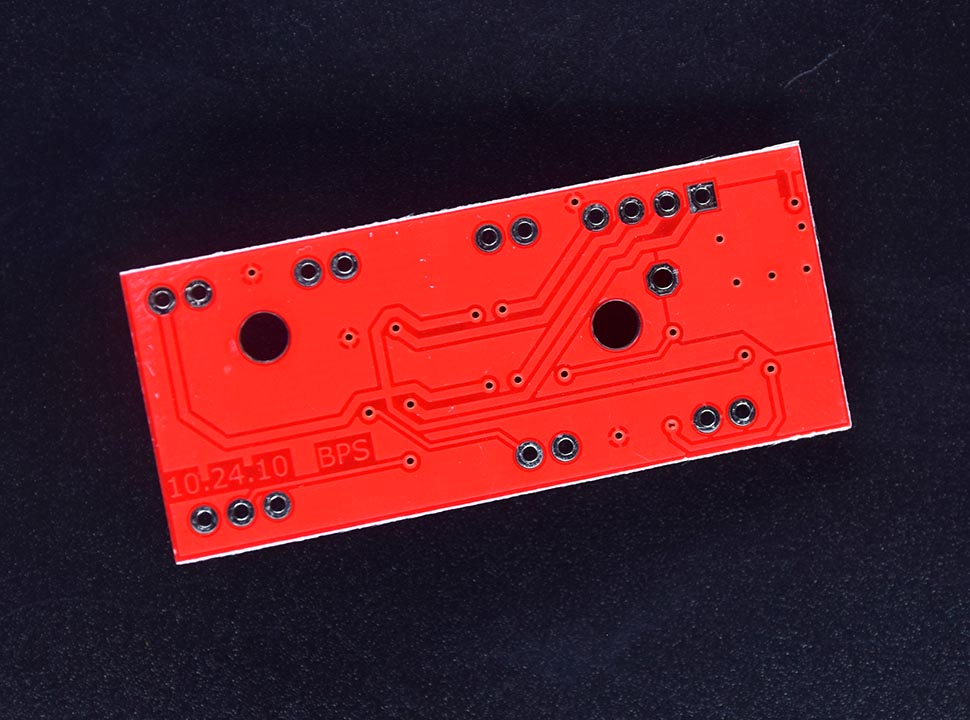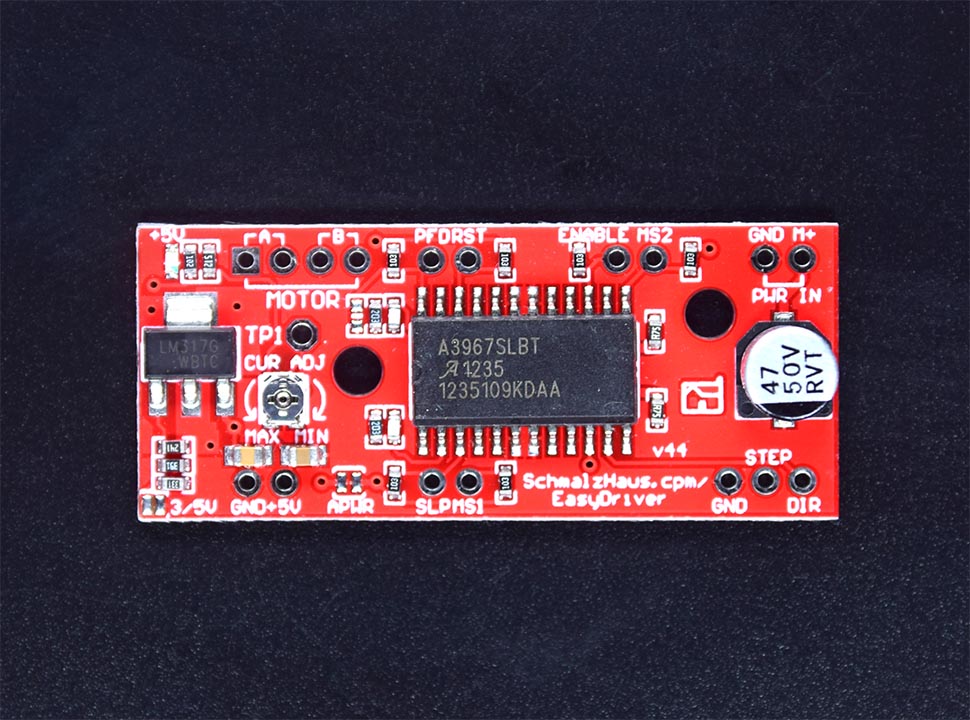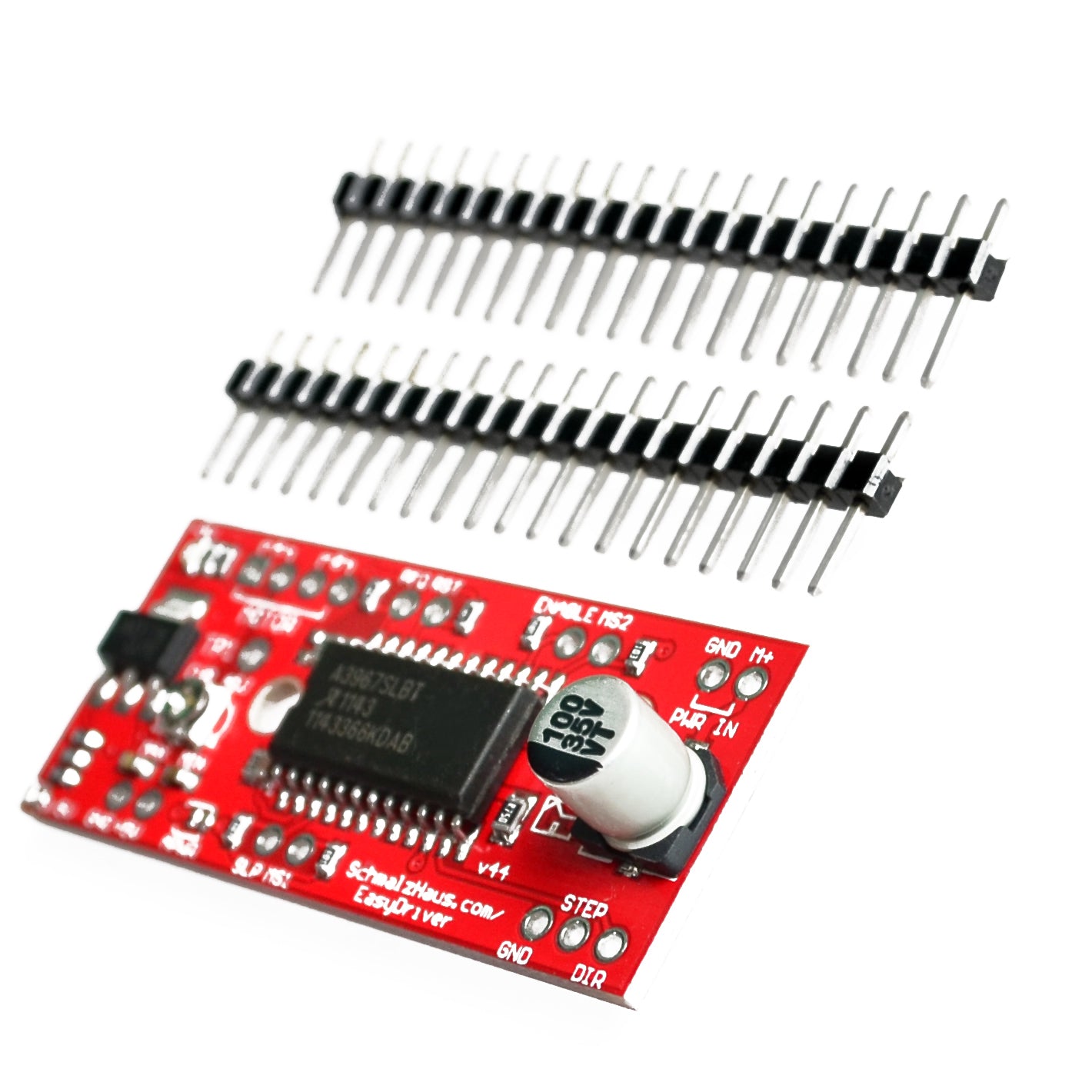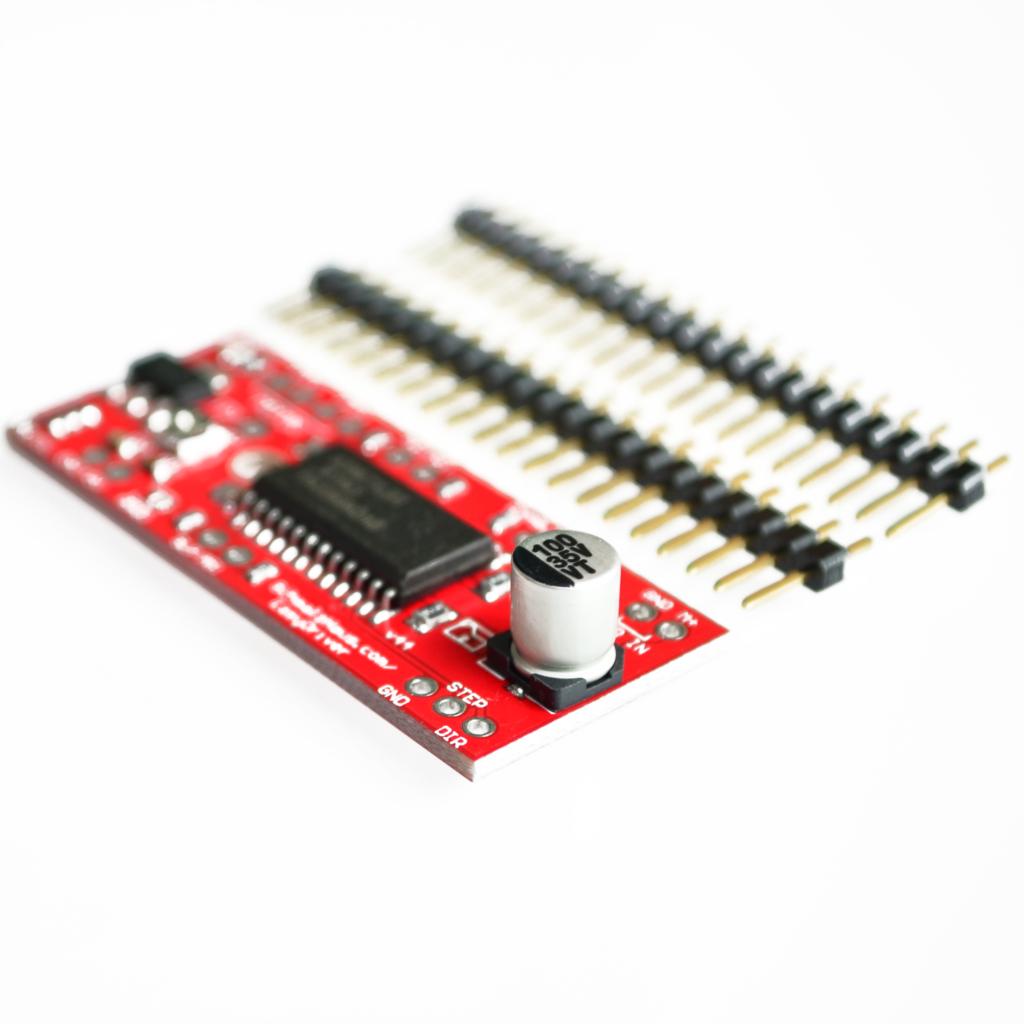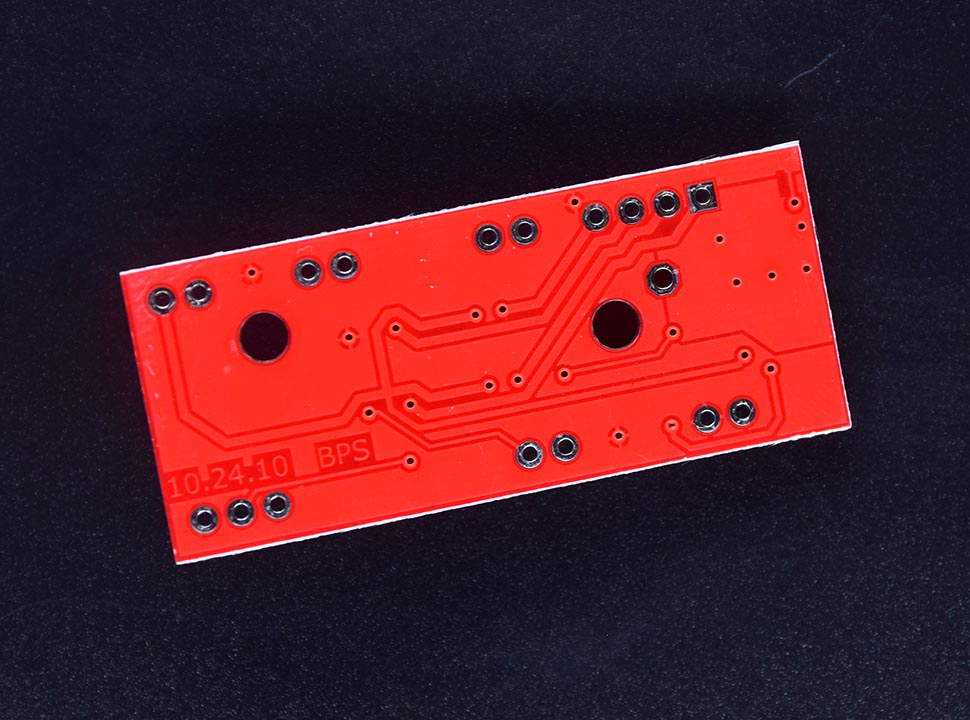Stepper Motor Driver EasyDriver A3967 - Controlling a 4-wire stepper motor would be less complicated with this compact yet powerful stepper motor driver. The EasyDriver module could drive up to around 750mA per phase of a bipolar stepper motor. The EasyDriver requires 6V to 30V to power the stepper motor.
Quick Pin Description
The datasheet is the greatest source of information on how everything functions because the Easy Driver is simply a breakout board for this driver chip. But here it is if all you need is a reference to the pins:
GND: The Easy Driver has three GND (Ground) pins. Inside the board, they are all linked together. Connect one or more of the GND pins to the negative side of your power supply and any other boards you're using to power the Easy Driver.
M+: This is the Easy Driver's power input. Attach this to the lead of the positive power supply. This power supply needs to be clean and range from 6V to 30V, 2A (or more) (low ripple).
A and B : (4 pins) The motor connections are as follows. The illustrations below show how to connect them. The motor's two coils are A and B, and each coil may have its two wires switched (it will just reverse the direction of the motor). A connector with a probability of intermittent contact should NOT be used to connect to the motor, since this will cause the motor driver chip to burn out).
Step:This must be a digital signal that ranges from 0 to 5 volts (or 0 to 3.3 volts if your Easy Driver is configured that way). This signal's rising edges will result in one step (or micro step) for each one.
DIR (Direction): This must be a digital signal between 0 and 5 volts (or between 0 and 3.3 volts if your Easy Driver is configured that way). On each rising edge of the STEP, the level of this signal (high/low) is sampled to decide which way the step should be taken (or micro step).
That's it - Only those signals are necessary to connect to anything. The Easy Driver sets the remaining values to appropriate defaults because they are all optional and are all below.
MS1/MS2: The micro-stepping mode is managed by these digital inputs. (MS1/MS2): full step (0,0), half step (1,0), quarter step (0,1), and eighth step (1,1: default).
RST (reset): When this typically high input signal is pushed low, the internal translator will be reset, and all output drivers will be disabled.
SLP (sleep): When pulled low, this normally high input signal disables internal circuitry and the output drivers to reduce power consumption.
Enable: When pulled high, this input signal, which is typically low, disables all outputs.
PFD: Please refer to the datasheet for further details as this one is complex. You can override the default slow decay mode with your voltage on this pin. (or by populating R17)
5V: This is an output pin that will power a circuit you may require powered with either 5V (the default) or 3.3V from the voltage regulator at a low current (say, 50mA - depending on input voltage). You may power the Easy Driver with your own VCC supply by cutting jumper APWR (SJ1) and using the 5V pin as a VCC input.
FEATURES:
- Based on the A3967 micro-stepping driver
- MS1 and MS2 pins broken out to change the micro-stepping resolution to full, half, quarter and eighth steps (defaults to eighth)
- Compatible with 4, 6, and 8 wire stepper motors of any voltage
- Adjustable current control from 150mA/phase to 750mA/phase
- Power supply range from 7V to 30V. The higher the voltage, the higher the torque at high speeds
DOWNLOADS:
Stepper Motor Driver EasyDriver A3967
Stepper Motor Driver EasyDriver A3967
Low stock: 1 left
Product Code
SKU:AE132
Couldn't load pickup availability


